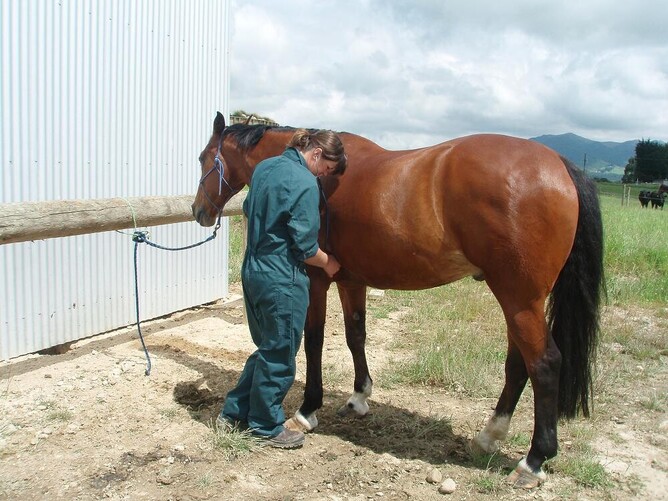Having a horse checked out by a vet can give you some reassurance before buying.
Having a horse checked out, or "vetted", before buying is an age-old tradition in equine circles. It is a good idea, especially where you can't get to see the horse and you would like an independent set of eyes to check it over.
It's also helpful if the horse has something you are not quite sure about and need an opinion on; like a melanoma in a grey horse.
A pre-purchase examination by a vet can be reassuring to people who are risk averse, have had a bad experience with a purchase in the past, and/or where there is a lot of money involved in a purchase.
Limitations
Clients often say they want everything ‘checked out’, however there are some limitations to the procedure.
It is an examination of body systems that are available to examine - for instance the legs, but not the kidneys. It is a snapshot of the horse at that moment, so things could be different in a week's time.
There are certain things like a thorough examination of the mouth that may require sedation, but this is not considered a 'normal' part of the examination.
Vets observe horses being ridden or working, but don't do this themselves, so can't offer an opinion on rideability or impulsion, for example. We consider lameness from a veterinary perspective and not a rider's perspective.
Pre-purchase exam procedure
Many years ago, the veterinary profession got together and devised a pre-purchase examination procedure, which covers the extent, process and procedure for the examination.
Nearly all vets in NZ follow the same process, designed by the NZ Equine Veterinary Association.
There are two forms of exam:
A ‘partial’ exam, comprising 2 stages. This consists of a thorough examination at rest, followed by an examination when moving at trot and lunge, including flexion tests.
A full, 5-stage exam. This adds vigorous exercise to the 2 stages of the partial, then a period of rest, followed by a trot-up once cooled out.
To avoid any confusion and second guessing as to the type of examination required, most vets get prospective purchasers to fill in a form detailing exactly what they require beforehand.
Other ancillary tests as part of the pre-purchase
There are a number of other tests conducted at the time of a pre-purchase. The most common are X-rays and an upper airway endoscopy examination.
There are also ultrasound examinations, electrocardiographic examinations, blood tests and a reproductive examination.
With regard to X-rays, the choice of what areas/joints to image is up to the purchaser, there is no standard set carried out.
We are happy to assist with suggestions on possible areas to consider based on the type of horse. For example, hocks and front fetlocks are stress joints for a jumper.
Pass or Fail
Vets don't ‘pass’ or ‘fail’ a horse at a vetting. Categorising a horse like this can unfairly label a horse as ‘unsaleable’.
What you get is an assessment of the horse with a list of issues found; some can be significant and others not.
No horse is ‘perfect’ and, like us, all come with baggage, so this needs to be considered when interpreting the results.
It is unwise to consider buying a horse on a pre-purchase examination only. Other factors like temperament, behaviours, ease of transportation, interaction with other horses, nature around traffic, ability to shoe etc are all considerations that should also go into the decision to buy.

